Back with another Bandai ‘Mini Ancient Fish’ model, but this time from series 1. As it is, it’s the only figure I have from this particular set, but it went without saying that I would add another alligator gar Atractosteus spatula to the collection! Like the more recent Series 2 (of which I have the whole set and have already discussed) the hallmarks of the series were there in the first series. The figures still have a naturalistic base, with a peg-insert that attaches in both the figure and the base (giving lots of option for display and such). And as before, a high degree of sculpt and paint detail.
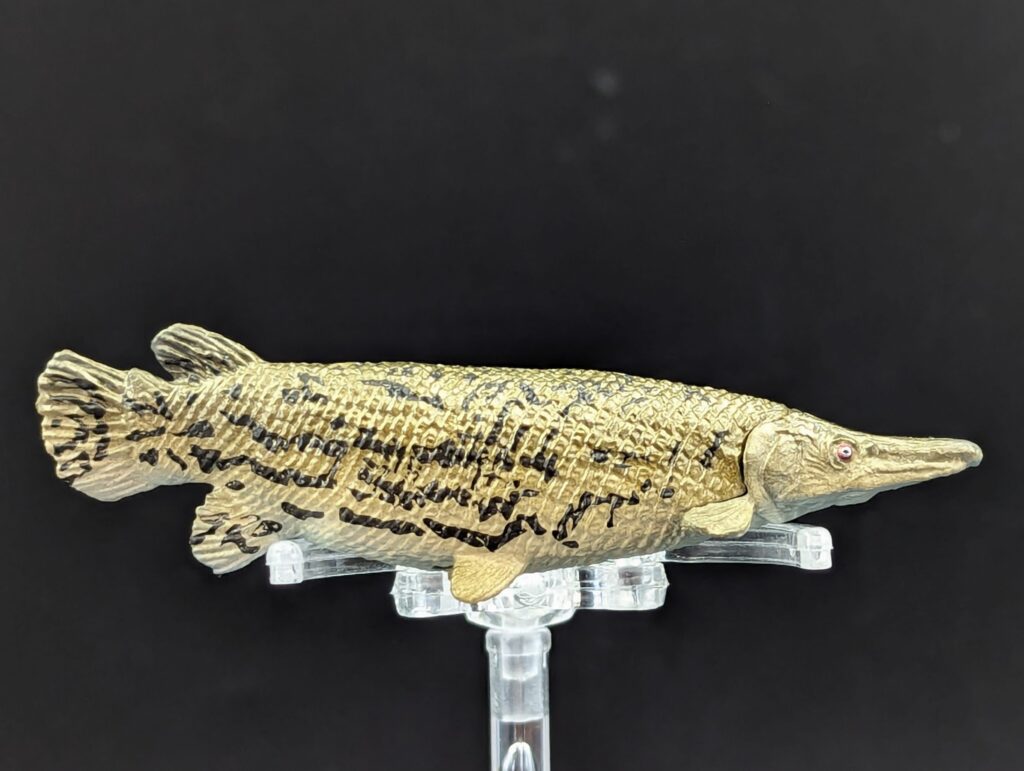
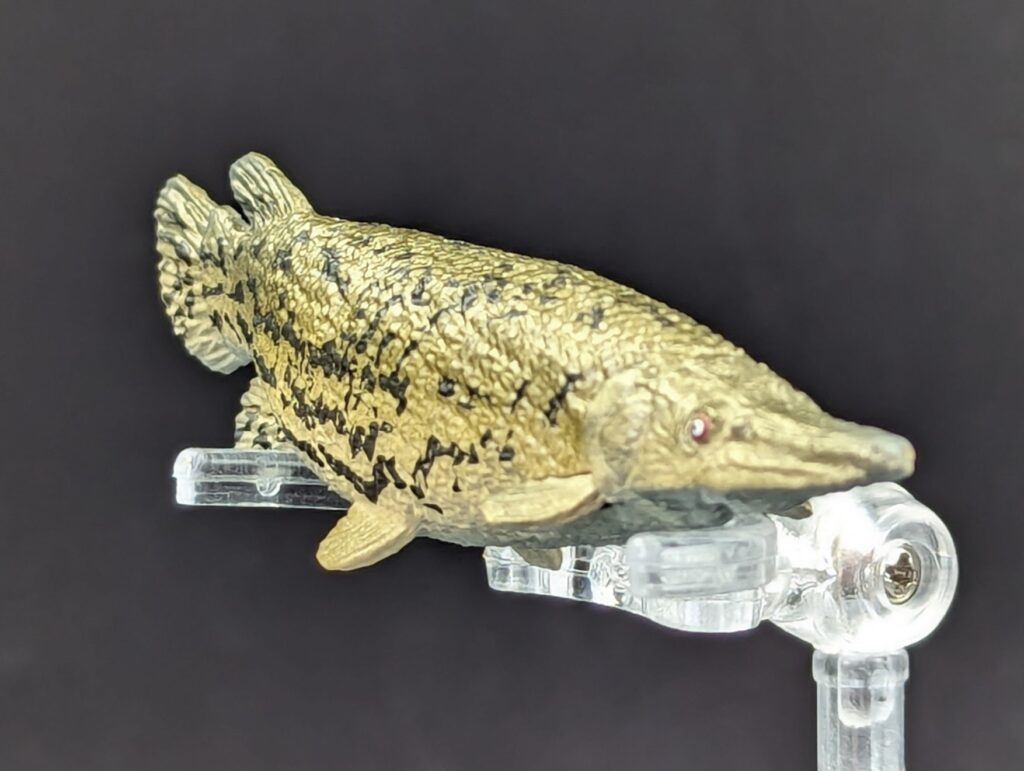
I also discussed alligator gars at length previously so I don’t have a lot to add. Except for something that becomes quite obvious when comparing the Takara ‘gator gar to this one from Bandai and should be mentioned. It’s really two things–the general body shape, and the overall colouration. The Takara indicates what would clearly be an older and larger adult–the mostly solid body colour with some spotted highlights, especially on the fin and ventrum; and a long, almost tubular body; in photos of the largest living ones, there are even fewer if any spots, and the finnage has a red tinge (maybe I’ll work through the Replica Toy Fish some day? The 6″ demonstrates this well…if anyone wants me to take on that challenge, let me know in the comments or say something on the Forum…I sound like a YouTuber now…). But the Bandai has a very different look–like, almost a completely different species different.
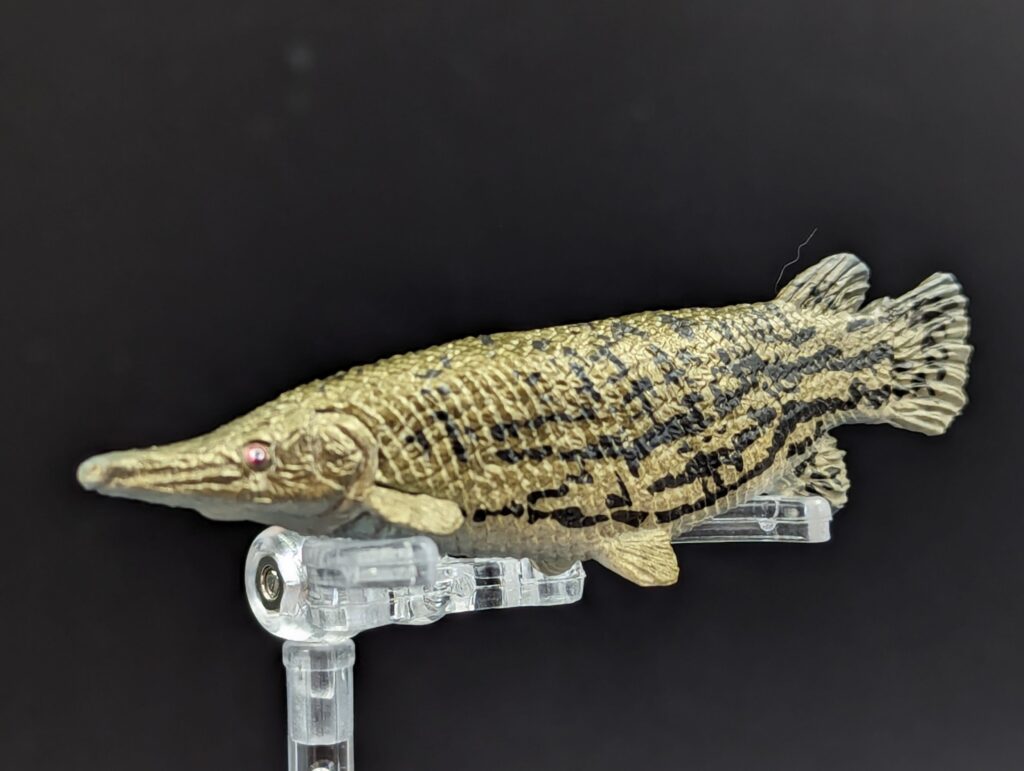

This figure has what would almost be described as a ‘chunky’ appearance and metallic colour. The body is still long and fusiform but is quite wide relative to its length. The figure is 7.8cm SL which gives a max scale of 1:39 if this is a really big 3 metre individual (but it absolutely is not…I’ll get there), with a circumference of 5.7cm…this is pretty much the same as the much longer Takara figure, which is gives it that different look. It has the broad, somewhat flattened bill of a mouth, with the bulbous recurved tip on the snout, as seen in Atractosteus, where the distinct nostrils are visible. The mouth is sculpted closed, and the sides are a uniform gold colour that makes it hard to differentiate upper from lower jaw; from beneath, it becomes more obvious due to the grey colour and sculpt that the lower jaw is somewhat shorter (opistognathous…I love vocabulary) but also wider, flaring out from the sides–probably giving these fish the ability to enclose around their prey from below when attacking with their mouth opened wide. The eyes are pronounced and sculpted slightly bulging from the sides of the head. They are ringed in faint red, then gold, and then a black pupil; for the size of the figure, the clean paint job here is impressive. The top of the head and the opercula have the plates inscribed in them, with the base of the pelvic fins sculpted against the lower opercula. The head and opercula+pectoral fins form a separate piece from the body that creates a nearly invisible seam even with close inspection.
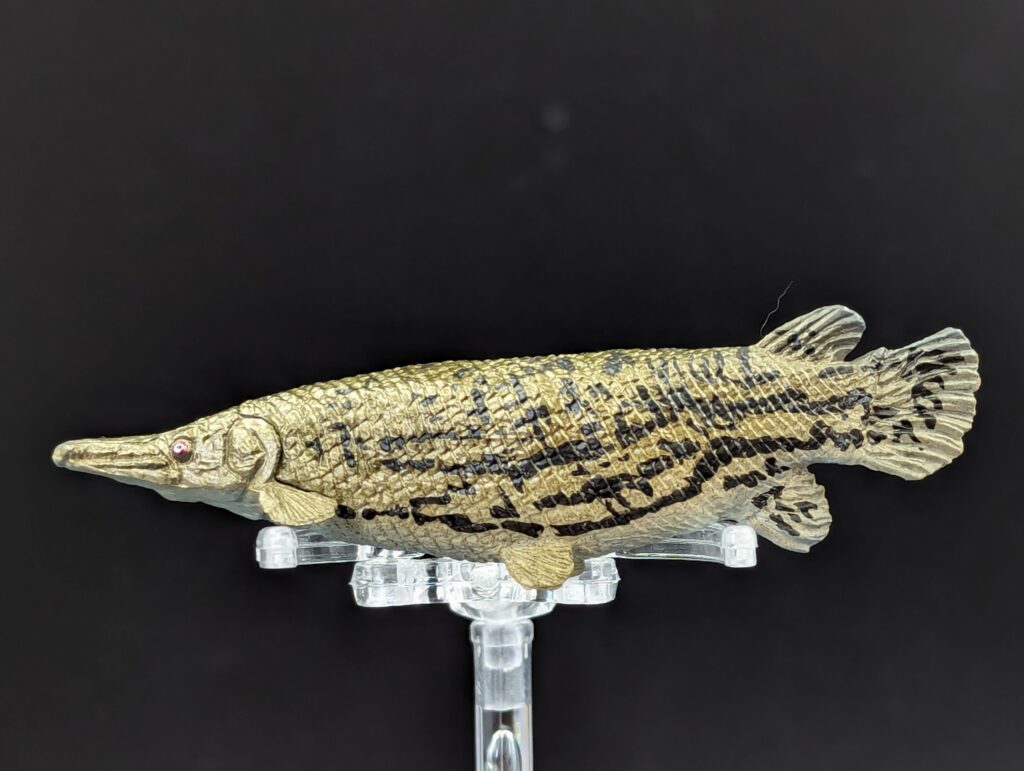
The body is well sculpted, though again, proportionally very wide for its length. The finnage is all in the correct places and the fin rays are deeply inscribed. The pectoral and pelvic fins extend well from the body, and the dorsal and anal fins are roughly opposite each other at the base of the caudal peduncle, where the body flattens laterally. The base of the tail is somewhat angled, reflecting the heterocercal caudal fin seen in gars, with the upper lobe of the tail extending a little more posteriorly. The tail fin itself is a fan, again with thick, distinct rays. The full fish is fully straightened, with only a minor rotation of the tail when seen from the back.
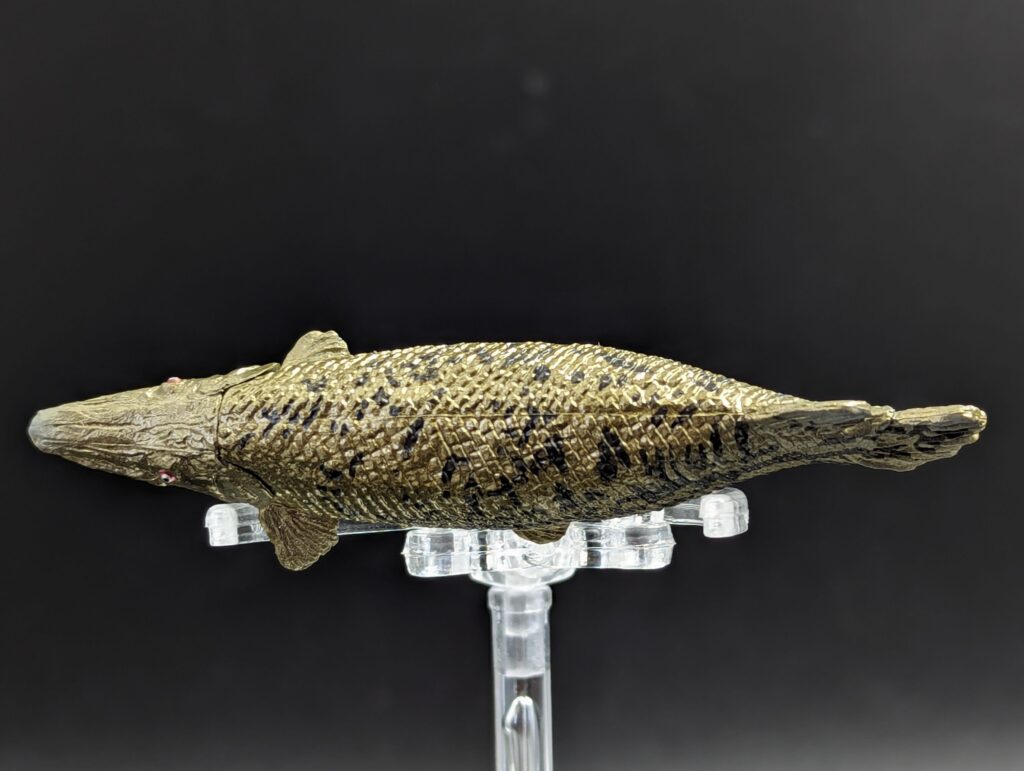
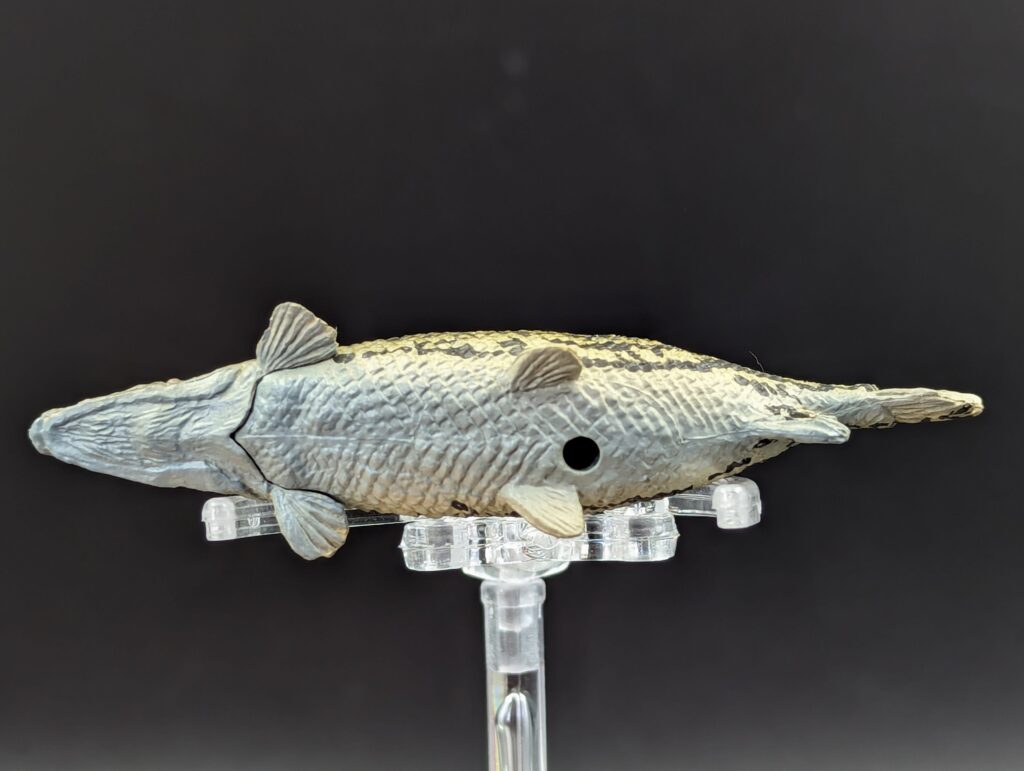
The colour of the figure, as mentioned for the head, has a base of shiny metalic gold, fading from the mid-body sides until reaching the belly which is a uniform very light grey (as in the lower jaw). Across the back and the dorsal fin, numerous black spots and small blotches can be seen. Moving down the body the black markings begin to be thin, irregular bars until about the mid-line of the sides, at which point the pattern becomes a series of thin, irregular horizontal stripes, interspersed with thin bars and blotches. The caudal peduncle and caudal fin continue this pattern, although the stripes break up more into spots on the tail fin rays. The anal fin has a few irregular blotches as well.

That’s a lot to say that the pattern on this fish look very unlike the previous alligator gar–but why? The first thought I have is that it would represent a subadult–the body is mostly ‘full grown looking’ but the patterning is more like what is seen in younger individuals (not juveniles though–they tend to have a bold striping and very different body shapes, like skinny little things). The body proportion, though, is a little weird–even older young adults tend to not be quite so thick relative to length. And while alligator gar can be pretty variable with the markings, as well as the base colour, the amount of markings feels off. This makes me think it could be a figure modelled after a captive individual, which maybe is a younger one…but excessively well fed?
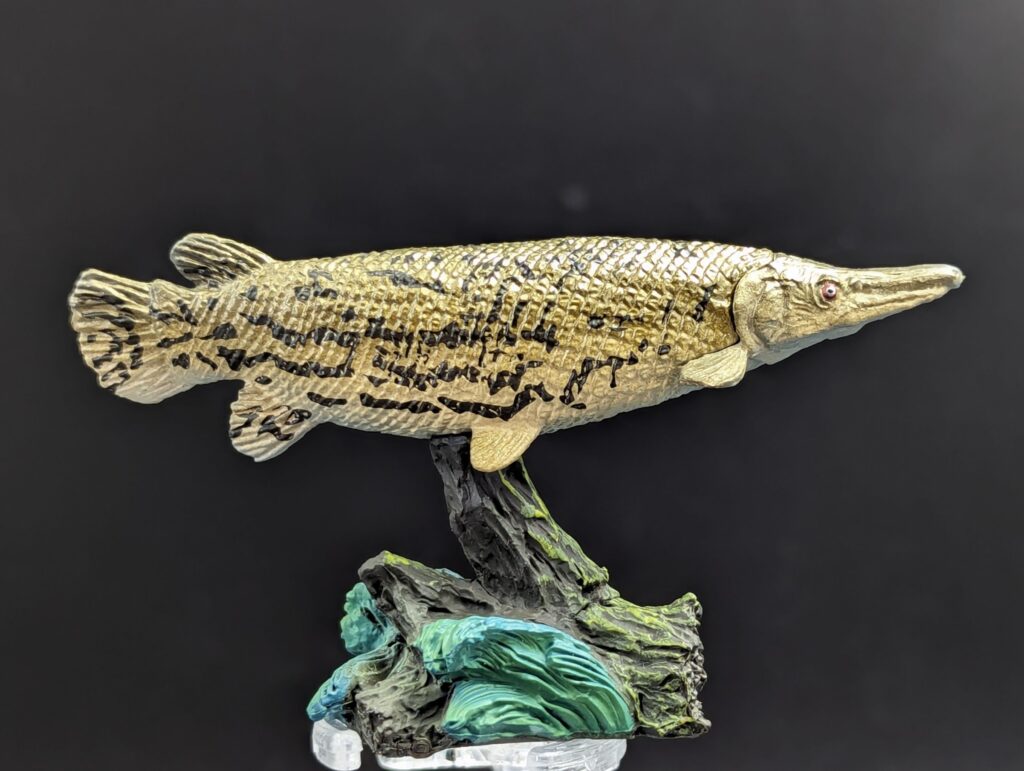
Or…with a little searching around…this figure looks a whole lot like a related species, Atractosteus tropicus, the tropical gar (or pegelagarto) of Central America, from Mexico to Costa Rica. Overall, these fish look similar to alligator gars, but can appear more wide, and are substantially shorter. A very large individual would be 1.25 metres long (giving a 1:16 scale for this figure), and they are usually much shorter than that. They also tend to have a whole lot more markings on them–an olive to brown or even gold body with a variety of stripes, bars, blotches and spots (in wild forms…). A quick search around for images of this smallest of the Atractosteus species finds some that look almost identical to the figure, with maybe some license for the detailed markings. As cool as it would be for this to be the case (no tropical gar figures exists…even the 3rd species, the Cuban gar or manjuari, A. tristoechus has had one made by Favorite) my guess is that it’s probably a coincidence, or the sculptor used multiple sources for references and didn’t catch the different species.
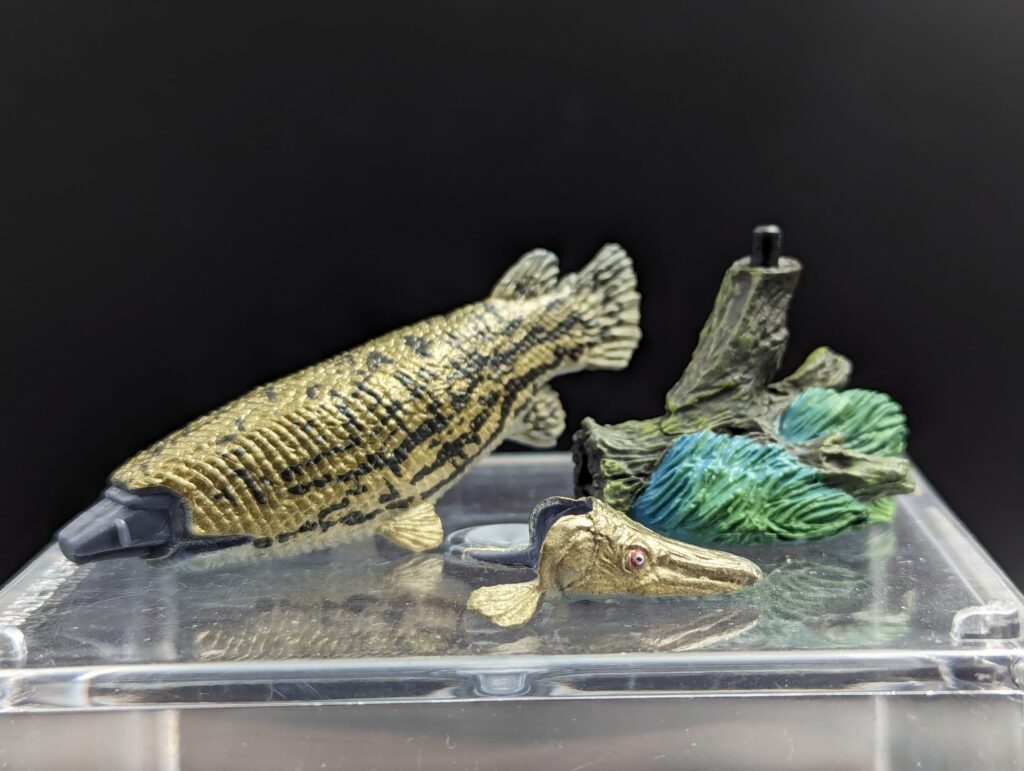
Overall, it’s a great figure–quite distinct from the several others out there. Other models do have the similar markings, but none have the relatively heavy body of this figure. It is still well made regardless, and is a great companion to the Series 2 figures by Bandai (which cover more of the primitive ‘bony fish’ that aren’t usually made). The set itself was released a couple of years ago, but appears to still be readily available so that’s good. Again, I recommend this fish figure highly, and if you want to identify it as a different species, I wouldn’t argue too hard against it (but I’ll still officially refer to it as an alligator gar, as the company did).


Disclaimer: links to Ebay and Amazon on the AnimalToyBlog are affiliate links, so we make a small commission if you use them. Thanks for supporting us!




Nice review as always. I like the diorama pic used for the main page. Is that new? Did you make it?
It is new, and yes, I made it myself!